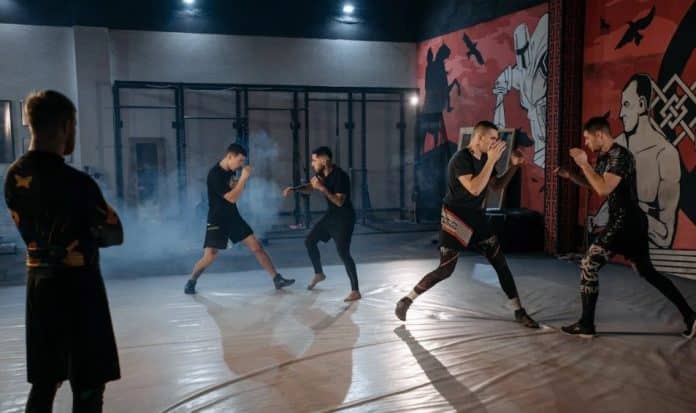
Are you ready to rumble? Mixed Martial Arts (MMA) is a thrilling, full-contact combat sport that’s taking the world by storm. It’s a raw and intense competition where fighters blend boxing, wrestling, judo, Muay Thai, and other disciplines to achieve dominance in the cage. But becoming an MMA master takes more than just guts. It requires strategy, skill, and unwavering dedication.
In this guide, we’ll break down the elements of MMA success. Whether you’re a seasoned fighter or an excited newcomer, this knowledge could be your ticket to knockout victories.
Train Your Body, Train Your Mind
MMA, like UFC, is a sport defined by its physicality. But to go blow-for-blow with the best, you need to sharpen your mind just as much as your fists. Think of it like a two-pronged attack:
- The Body: MMA demands a mix of strength, speed, endurance, and flexibility. A well-rounded training routine must include:
- Strength Training: Squats, deadlifts, bench press, pull-ups, and Olympic lifts for full-body power development.
- Cardio: Running, swimming, HIIT intervals to build a gas tank that won’t quit mid-fight.
- Sport-Specific Conditioning: Grappling circuits, bag work, and pad drills to condition your body to the rigors of MMA.
- Flexibility & Mobility: Essential for injury prevention and to open up striking and grappling options.
- The Mind: Fighters don’t just brawl; they strategize. Sharpen your mental game by:
- Visualization: Picturing success in the cage builds confidence and programs your body to perform.
- Controlling Nerves: Breathing techniques and mindfulness exercises can calm you under the spotlight.
- Fight Study: Analyze your opponents, identifying weaknesses and their favorite techniques. Learn from them!
Mastering the Fundamentals
MMA is like a toolkit of fighting styles. To become a well-rounded warrior, you must master the essentials:
- Striking:
- Boxing: The foundation for crisp punches. Master the jab, cross, hook, and uppercut. Learn head movement and footwork for effective defense.
- Muay Thai: Adds a brutal arsenal of kicks, knees, elbows, and clinch techniques to your offensive game.
- Strategy: Footwork and creating angles are crucial, as are feints and setups to land your shots.
- Grappling:
- Judo/Wrestling: Practice takedown techniques like double legs, single legs, and throws to dictate where the fight happens.
- Brazilian Jiu-Jitsu: Joint locks, chokes, and controlling positions are your ground game arsenal. Focus on escapes and learning to pass your opponent’s guard.
- Transitions:
- Shifting Gears: Fluidly blending strikes into takedown attempts or escaping a bad position with strikes disorients your opponent. Dedicated transition drills are important.
- Fight Case Studies: Watch UFC fights, follow UFC prelims bets, and analyze how high-level fighters switch between disciplines to gain an advantage.
Beyond the Basics: The X Factor
Raw skill and fundamentals will take you far, but to reach the pinnacle of MMA, you need something special:
- Killer Instinct: Don’t just survive; finish the fight! Train to recognize openings and capitalize with a devastating strike or submission. Develop a plan to break your opponent’s will.
- Heart: Fights are often won or lost in the gritty moments. Push past pain by developing mental toughness through grueling workouts and learning to embrace the adversity of the cage as an opportunity to rise.
- Adaptability: Fights don’t always go by plan. Be ready to switch strategies on the fly. Study fighters with different styles to learn how to counter their strengths.
Fuel Your Warrior Fire
- Nutrition: A whole-food diet rich in protein, complex carbs, and healthy fats is vital for performance. Emphasize the importance of staying hydrated throughout the day, especially during training.
- Rest & Recovery: Adequate sleep is essential for muscle growth and mental focus. Activities like Yoga or light workouts can boost healing and don’t underestimate the power of dedicated rest days.
- Injury Prevention: Always prioritize proper warm-ups and cool-downs. Include prehab exercises focused on strengthening the areas most commonly injured in MMA, like the knees, shoulders, and core.
Your Path to Greatness
- Finding a Gym: Look for a gym with experienced coaches, a supportive atmosphere, and classes that match your experience level. It’s essential to find a place where you feel motivated and safe to grow as a fighter.
- Starting Slow: Don’t rush the process. Focus on developing a solid foundation and celebrate small wins along the way. Embrace the journey of continuous improvement.
- Compete: Test yourself with amateur fights or competitions when you’re ready. Win or lose, the experience you gain in the cage is invaluable.
- Analyze Your Performance: Study your fights with a critical eye, working with your coaches to identify strengths and weaknesses. This targeted analysis will drive your development.
Conclusion
MMA is a journey, not a destination. It’s a test of body, mind, and spirit. By embracing the training, the strategy, and the mental fortitude required, you, too, can unlock the hidden warrior within and experience the thrill of victory in the cage. Remember, the dedication you put in will directly influence the results you achieve.












